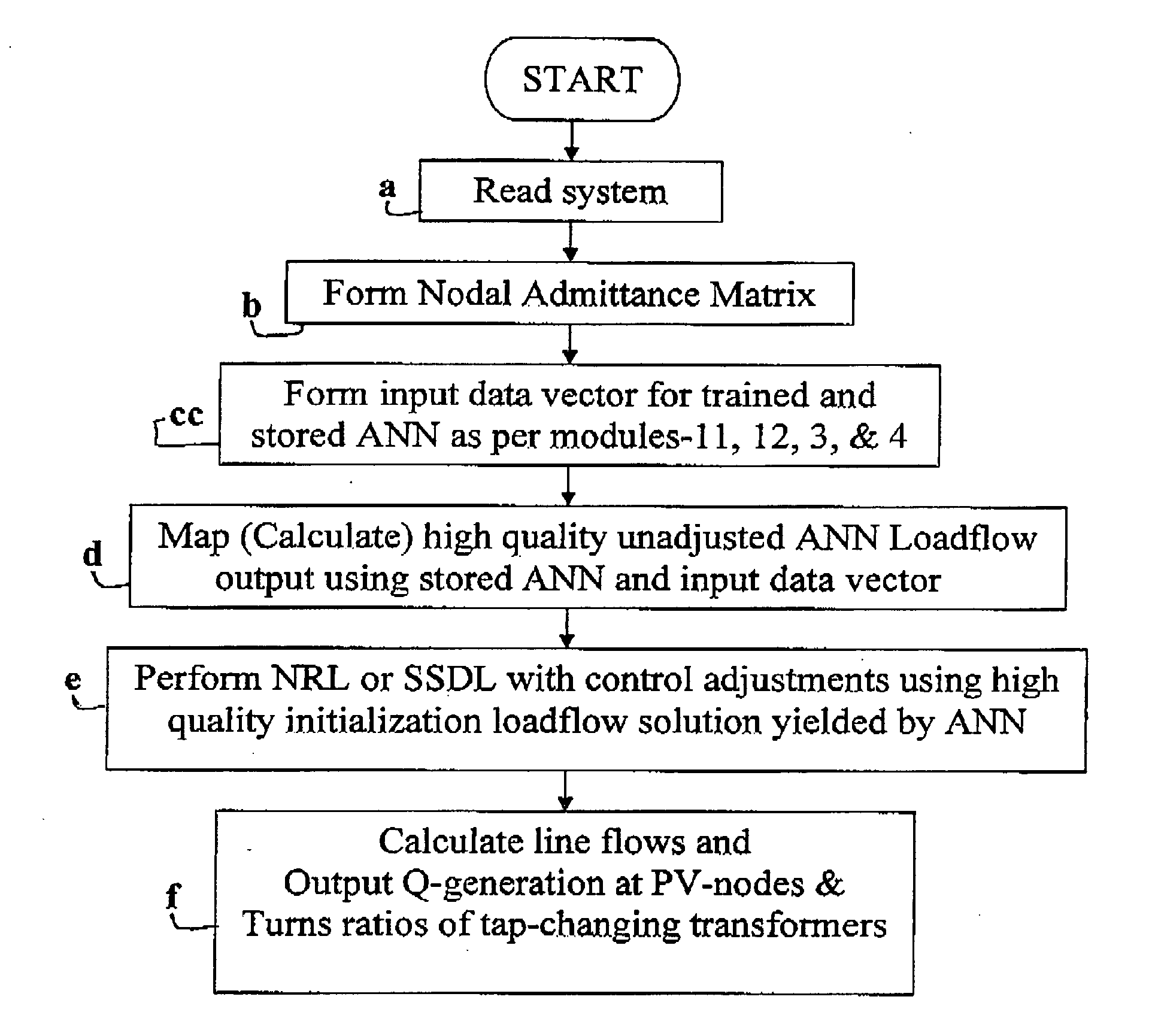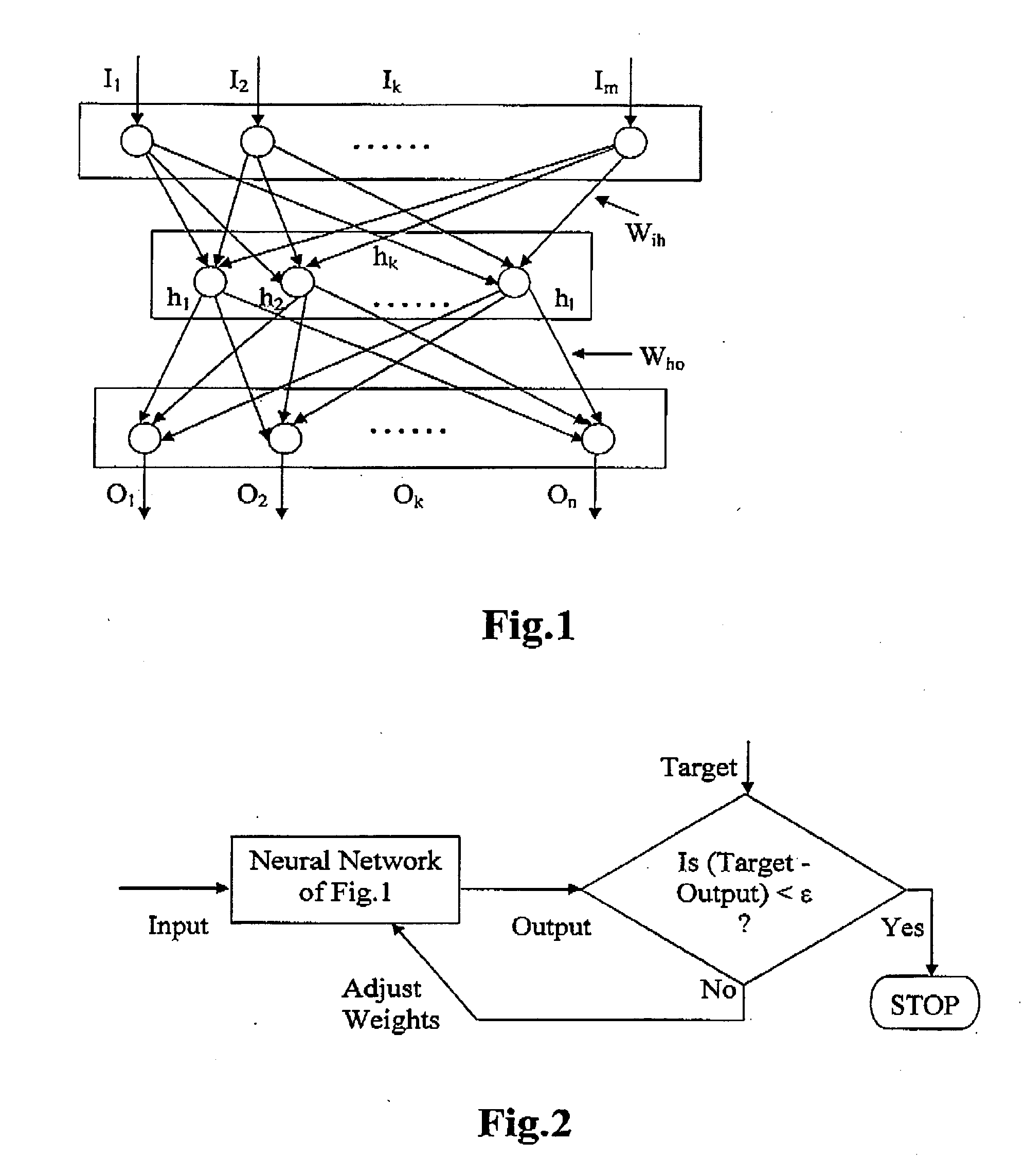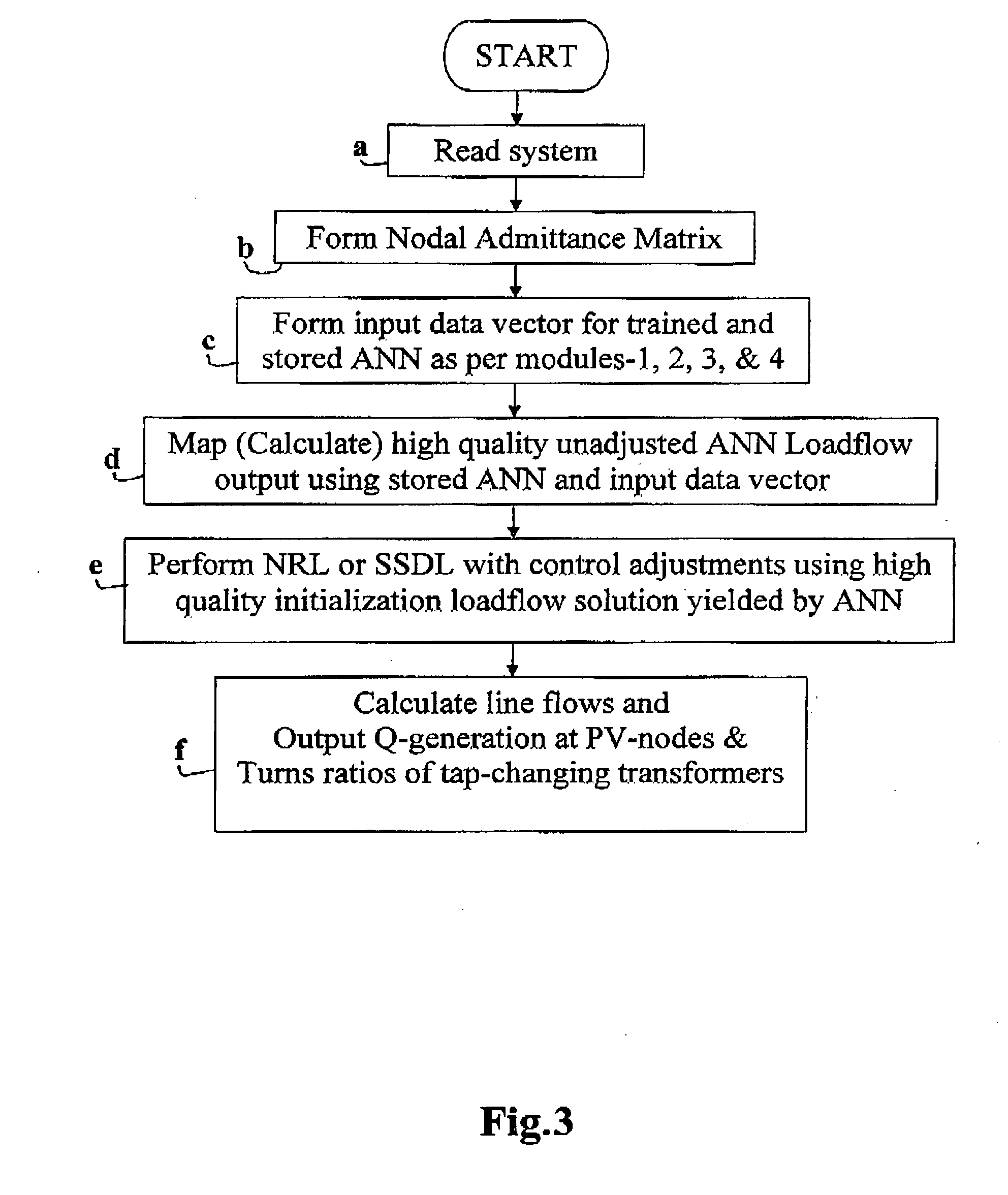Method of Artificial Nueral Network Loadflow computation for electrical power system
a technology of electrical power system and loadflow computation, applied in the direction of biological neural network models, ac networks with different sources at the same frequency, position/direction control, etc., can solve the problems of change in the pattern of power flow in the network, over/under voltage, and small and large disturbances in the healthy operating power network, and achieve the effect of improving the efficiency of the prior art ssdl computation method
- Summary
- Abstract
- Description
- Claims
- Application Information
AI Technical Summary
Benefits of technology
Problems solved by technology
Method used
Image
Examples
Embodiment Construction
[0057]A loadflow computation is involved as a step in power flow control and / or voltage control in accordance with FIG. 7 or FIG. 8. A preferred embodiment of the present invention is described with reference to FIG. 6 as directed to achieving voltage control.
[0058]FIG. 9 is a simplified one-line diagram of an exemplary utility power network to which the present invention may be applied. The fundamentals of one-line diagrams are described in section 6.11 of the text ELEMENTS OF POWER SYSTEM ANALYSIS, forth edition, by William D. Stevenson, Jr., McGrow-Hill Company, 1982. In FIG. 9, each thick vertical, line is a network node. The nodes are interconnected in a desired manner by transmission lines and transformers each having its impedance, which appears in the loadflow models. Two transformers in FIG. 6 are equipped with tap changers to control their turns ratios in order to control terminal voltage of node-1 and node-2 where large loads are connected.
[0059]Node-6 is a reference node...
PUM
 Login to View More
Login to View More Abstract
Description
Claims
Application Information
 Login to View More
Login to View More - R&D
- Intellectual Property
- Life Sciences
- Materials
- Tech Scout
- Unparalleled Data Quality
- Higher Quality Content
- 60% Fewer Hallucinations
Browse by: Latest US Patents, China's latest patents, Technical Efficacy Thesaurus, Application Domain, Technology Topic, Popular Technical Reports.
© 2025 PatSnap. All rights reserved.Legal|Privacy policy|Modern Slavery Act Transparency Statement|Sitemap|About US| Contact US: help@patsnap.com



